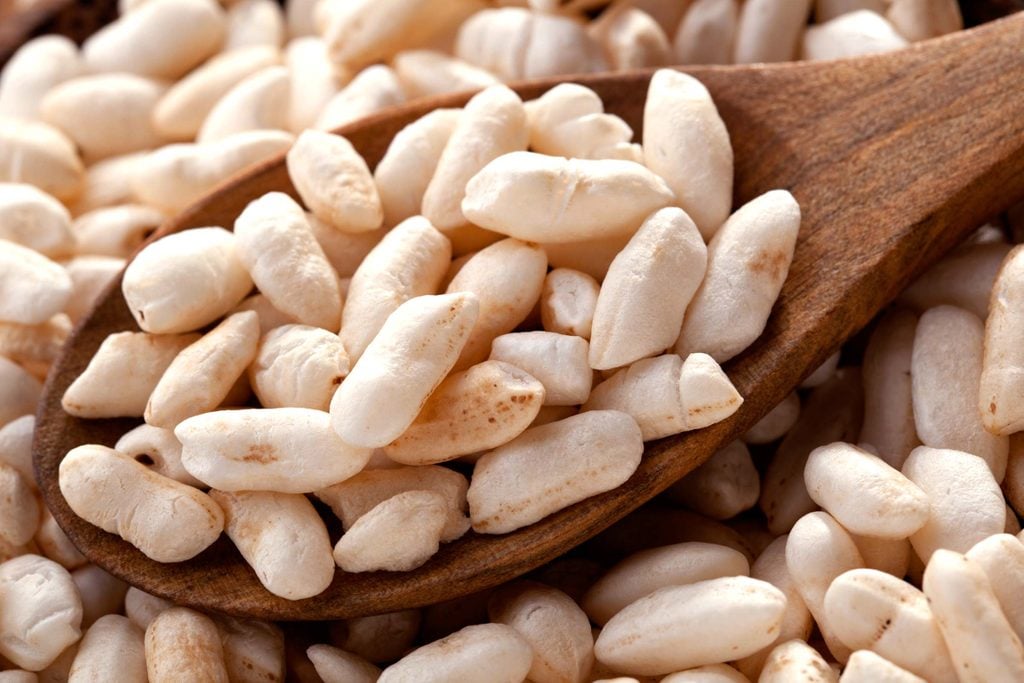Going Gluten-Free? You Need to Know About This Hidden Danger
Updated: Mar. 29, 2017
Ditching gluten may be all the rage—and it's obviously a must if you have celiac disease—but researchers have uncovered a risk you need to know about if you eat gluten-free.
 It’s all the rage right now to ditch the carbs and adopt a gluten-free diet—fully one-quarter of Americans reported eating gluten-free in 2015, a 67 percent increase from 2013, according to EurekAlert. But new research from the University of Illinois at Chicago may give you good reason to keep those grains in your cupboard.
It’s all the rage right now to ditch the carbs and adopt a gluten-free diet—fully one-quarter of Americans reported eating gluten-free in 2015, a 67 percent increase from 2013, according to EurekAlert. But new research from the University of Illinois at Chicago may give you good reason to keep those grains in your cupboard.
According to the report, published in the journal Epidemiology, people who eat a gluten-free diet may be at increased risk for exposure to arsenic and mercury, heavy metals that can lead to cancer, neurological effects, and heart disease over time, when they accumulate in the body, EurkAlert! reports.
For the research, study author Maria Argos, assistant professor of epidemiology in the UIC School of Public Health, and her team looked at data from a National Health and Nutrition Examination Survey of more than 7,000 participants, searching for a link between gluten-free diets and biomarkers of toxic metals in blood and urine. Of the survey participants, 73, ranging in age from 6 to 80, reported eating a gluten-free diet. The 73 on a gluten-free diet had a higher concentration of arsenic in their urine and mercury in their blood. Arsenic levels were almost twice as high for people eating a gluten-free diet, and mercury levels were 70 percent higher.
The reason for these higher levels can be attributed to the foods, like rice, that people following a gluten-free diet commonly eat. According to Argos, prior studies have shown that rice in particular may be a source of arsenic exposure. Rice in the form of rice flour, rice syrup, and puffed rice is found in many gluten-free food products, which gluten-avoiders may be more reliant on. Here are additional foods with gluten that will surprise you.
Even though data indicates an increase in mercury and arsenic levels, Argos and her colleagues believe further research is needed on the complete findings and possible consequences of eating a gluten-free diet. They hope to perform future studies to confirm the link to corresponding health consequences from higher levels of exposure to arsenic and mercury as part of a gluten-free diet.
“While the risk of exposure to arsenic and mercury was observed to be increased, the levels themselves were still low and not considered to be toxic,” Argos says. “Our recommendation is for people to be aware of what is in the food products they are consuming and try to diversify their diet so not heavily reliant on rice or rice-based products since arsenic remains unregulated in our food.”
Obviously, a gluten-free diet is a must for people who have celiac disease, a disorder that leaves you unable to properly digest gluten, according to WebMD, but fewer than one percent of Americans have gotten a celiac diagnosis, and many more are following the diet without professional guidance. Often, people report eating gluten-free because they believe it reduces inflammation, but that belief has not been scientifically proven. If you think you may have celiac disease, here are some symptoms to speak with your doctor about.
Bottomline: Don’t kick rice off the menu, but do try to eat a variety of grains, both to protect against arsenic overload and to take advantage of different nutrients. Also keep in mind that some types of rice naturally absorb less arsenic than others. Your best bets, research has shown, are Basmati, followed by Jasmine. And white rice is safer than brown because the arsenic gets removed along with the bran layer during processing. Whenever possible, choose U.S. rice over brands from Asia and Europe because the arsenic is one-third to one-half less of the more toxic, inorganic kind. You can also remove about half the arsenic in your rice by rinsing it thoroughly before cooking and by boiling it in a large pot of water—using five or six parts water to one part rice, according to the Center for Science in the Public Interest, a nonprofit watchdog and advocacy group.
